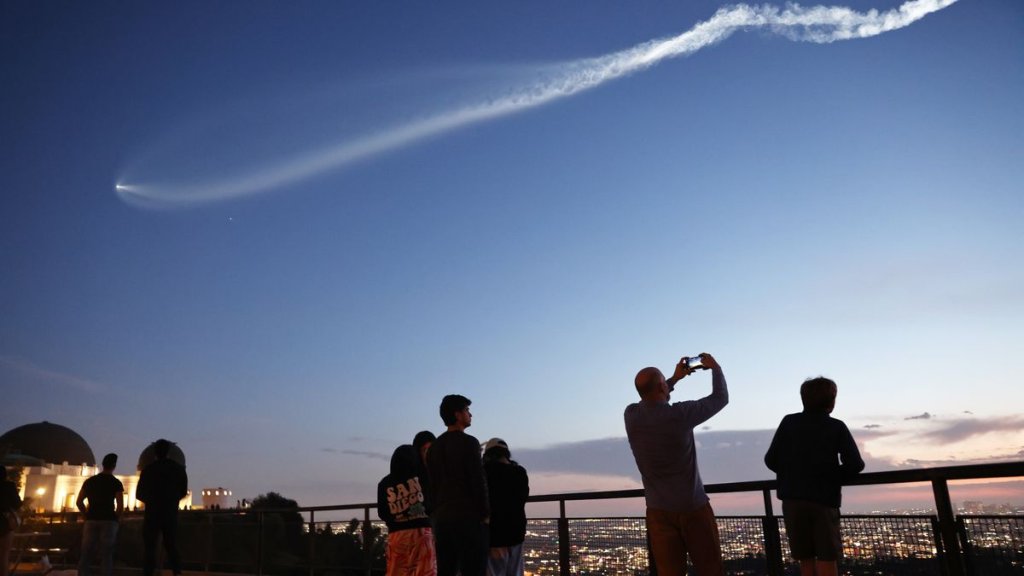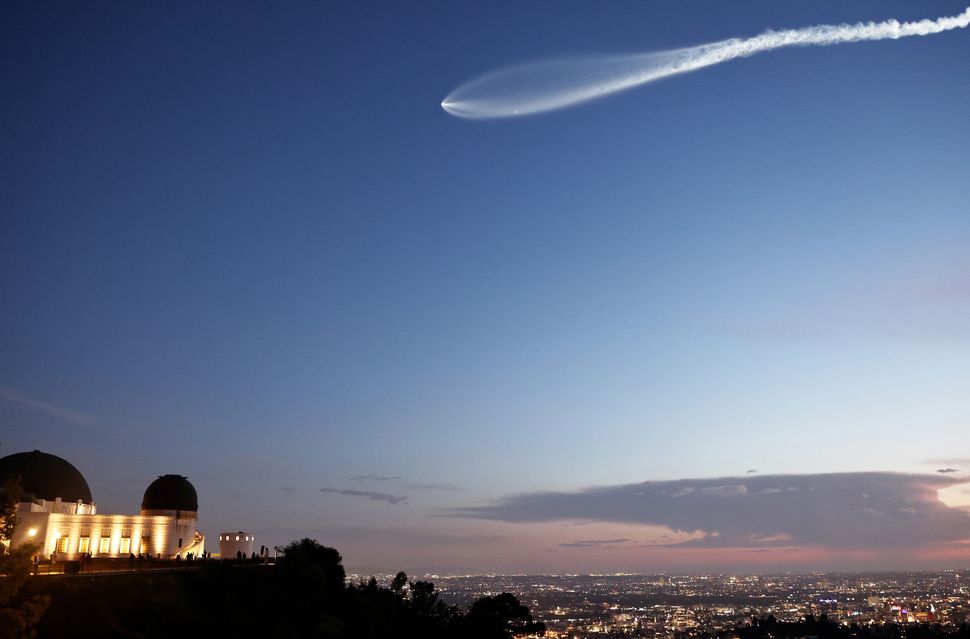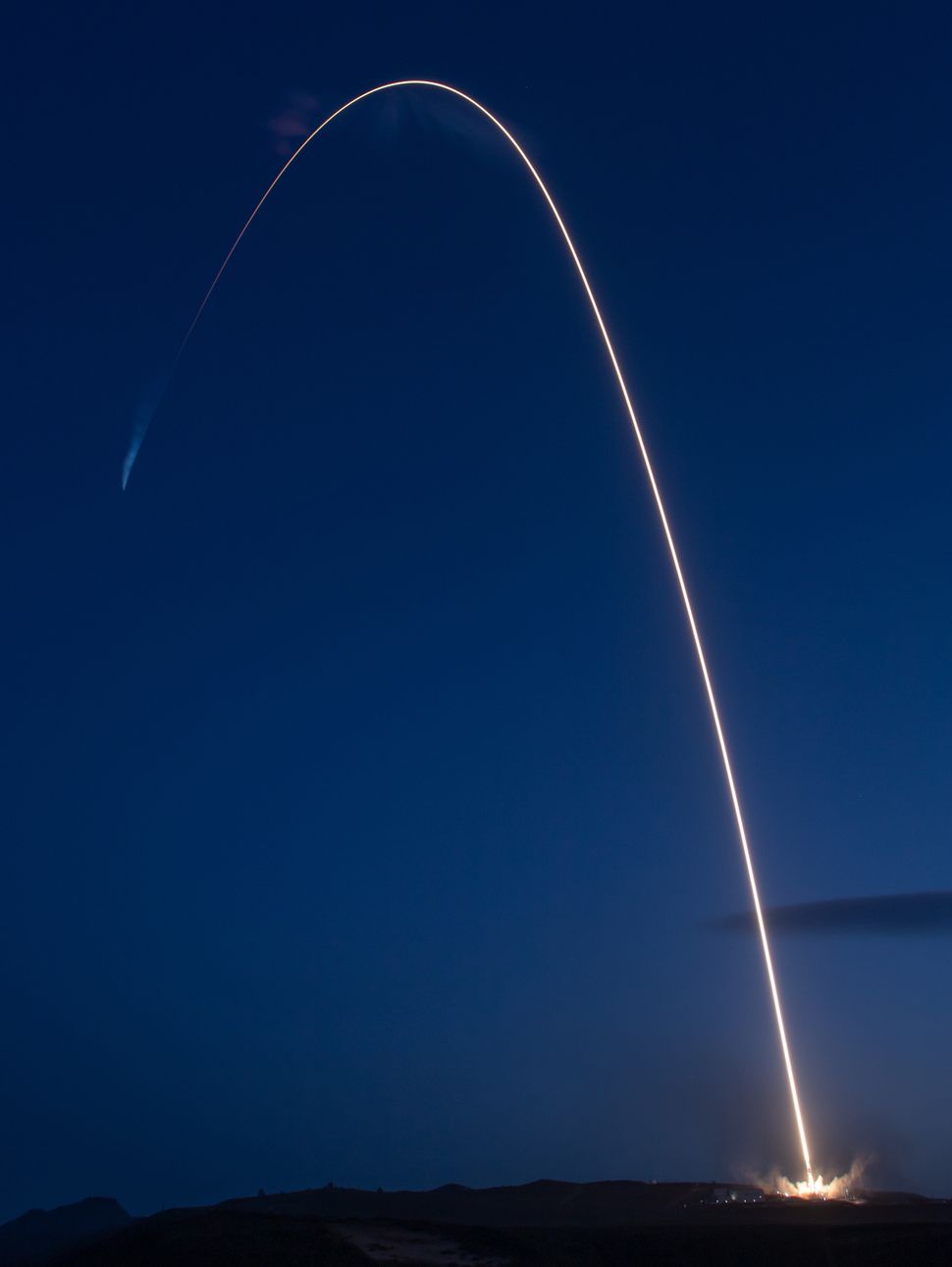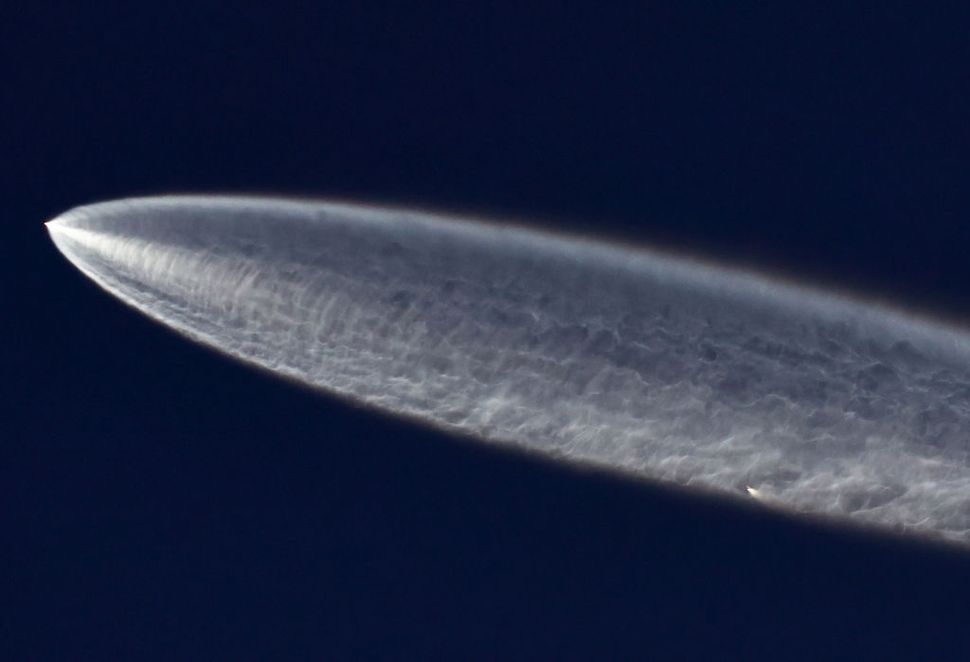
SpaceX’s evening Starlink launch wows West Coast skywatchers (photos) (Image Credit: Space.com)
A SpaceX Starlink launch lit up skies across the U.S. West Coast on Monday evening (March 18), leaving a dazzling trail seen for hundreds of miles.
A SpaceX Falcon 9 rocket lifted off from Vandenberg Space Force Base on California’s central coast Monday at 10:28 p.m. EDT (7:28 p.m. local time; 0228 GMT on March 19). The launch vehicle carried a batch of 22 Starlink satellites to add to SpaceX’s ever-expanding wireless internet megaconstellation.
In what’s come to be known as the “jellyfish” effect, the dusk launch provided ideal conditions for the setting sun to light up the rocket’s expanding engine plume against the darkening sky, as the vehicle climbed high into Earth’s atmosphere.
Related: SpaceX launches 22 Starlink satellites from California in dusky evening liftoff (video)

The launch site at Vandenberg Space Force Base is notorious for its overcast and extremely foggy conditions, so Monday’s clear skies were a relatively rare treat for onlookers.
Falcon 9 launches @Starlink satellites to orbit from California pic.twitter.com/06MvgZzv0W
— SpaceX (@SpaceX) March 19, 2024


Many X users responded to SpaceX’s post, sharing their photos of the Falcon 9 jellyfish, which could be seen in neighboring states. “I can see it from my rooftop in Arizona,” wrote Brandon D. Schilling (@BrandoSchil).
Observers at Griffith Observatory in Los Angeles were also treated to the sky site, as the Falcon 9’s trail stretched above the busy city low on the horizon.

Monday’s launch was the 10th mission for this particular Falcon 9 first stage, which landed downrange on SpaceX’s droneship “Of Course I Still Love You” in the Pacific Ocean shortly after liftoff. The rocket’s second stage continued to orbit, successfully deploying the 22-satellite payload in low Earth orbit (LEO).
SpaceX’s Starlink megaconstellation currently consists of more than 5,500 satellites, and continues to grow. A recent test launch of the company’s giant Starship vehicle included a payload bay door designed to deploy SpaceX’s next-generation Starlink satellites, expected to add thousands more to the network once in operation.







